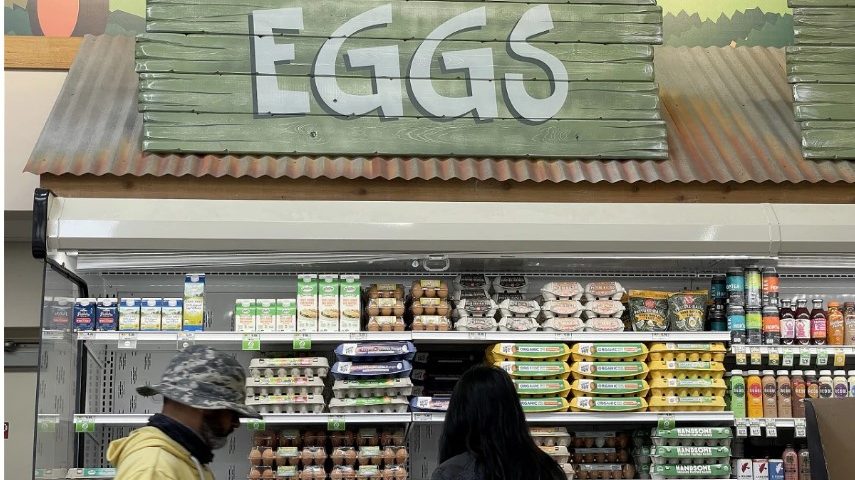(Trends Wide) — Inflation in the United States is lower than a year ago. But if you live in that country, you may still feel frustrated when paying your bills.
This is because the prices of all goods and services have not decreased. On the contrary, they continue to increase, although at a lower rate than a year ago. In general, prices remain high according to two key indicators of inflation.
But the inflation story is even more complex.
Everyone feels the weight of inflation differently
Are you vegan or vegetarian? Do you go to work by car or public transportation? Do you have school-age children? The answers to these questions are important, because they can make you suffer more from the price shock.
Vegans aren’t bothered by egg prices, which are up 21% from last year, according to the Consumer Price Index for April. But they may suffer an even bigger increase in the price of margarine, which rose 24%.
If you drive your car to work every day, you’re going to see price hikes on almost everything related to its use, from insurance to repair and maintenance expenses. However, gasoline prices are down 12% from last year. Meanwhile, public transport costs users across the country 0.3% more than last year.
And while having a child has never been without expense, now is an especially expensive time to have a school-age child. Meals served in elementary and secondary schools have increased nearly 300% from a year ago. This comes after a pandemic-era government program designed to provide free or highly subsidized meals in schools expired last year.
Inflation disproportionately hurts people with low incomes
If you’re struggling to make ends meet, whatever you buy, inflation will automatically affect you more than someone who has a financial cushion to absorb some of the price rises.
“Inflation is often a regressive tax,” says Megan Greene, chief economist at the Kroll Institute. Poorer households spend more of their income on unavoidable expenses like food and gasoline, making them more vulnerable to price hikes.
Not everything responds well to interest rate hikes
The Federal Reserve spent the past year raising interest rates in an effort to reduce inflation. When the Federal Reserve raises interest rates, it makes it harder for banks and other lenders to borrow money. They pass these costs on to consumers by charging them higher interest rates for the debts they incur. The Federal Reserve’s hope is that the added costs will cause a pullback in spending and cause businesses to rethink price hikes.
Rate hikes have worked in some sectors of the economy, such as housing, where prices have fallen a lot. But the service sector of the economy is not responding to rate hikes.
New York Federal Reserve Chairman John Williams highlighted it in a speech on Tuesday, noting that it is the “most persistent area of inflation.”
“This is due to a continuing imbalance between global supply and demand,” he said. “It’s the longest it will take to go down.”
In part, the imbalance is due to the fact that consumer behavior continues to be altered by the pandemic. When the US economy ground to a halt, consumers didn’t spend money on many services. When it reopened, consumers seized the opportunity to finally enjoy services and experiences.
But surprisingly, that trend hasn’t abated: People continue to spend more on services than goods, Williams said.
Services inflation is harder for the Federal Reserve to contain as the driving force is rising wages, said Greene, who will join the Bank of England’s monetary policy committee in July.
“It’s relatively easy to raise wages, but it’s almost impossible to cut them,” he told Trends Wide. Some companies continue to have difficulties finding qualified labor to fill their vacancies and are forced to raise wages.





